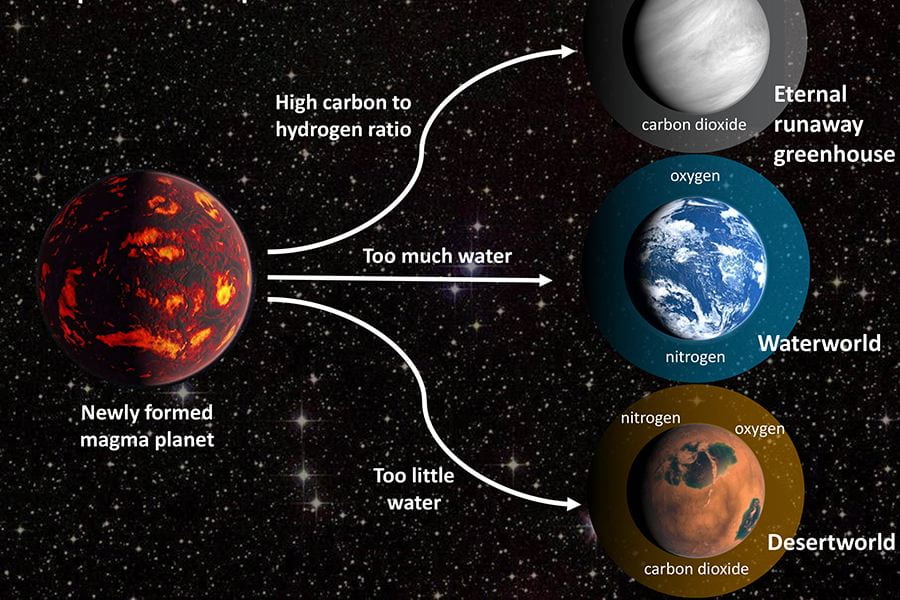Featured
- Get link
- X
- Other Apps
Astrobiology
Astrobiology is a multidisciplinary field that seeks to understand the origin, evolution, and distribution of life in the universe. It combines principles and methodologies from biology, chemistry, physics, geology, and astronomy to investigate the possibility of life beyond Earth and to address fundamental questions about the nature of life itself. Astrobiologists explore the conditions and environments that could support life, search for signs of life in the cosmos, and study the limits and diversity of life forms.
Key Aspects of Astrobiology:
1. Origins of Life: Astrobiology investigates the origins of life on Earth and explores the potential for life to emerge on other planets and moons. Scientists study the conditions present on early Earth and simulate prebiotic environments to understand how simple organic molecules could have formed and evolved into more complex structures, ultimately giving rise to life. They examine the role of key ingredients like water, carbon compounds, and energy sources in the development of life.
2. Habitability: Astrobiologists explore the concept of habitability, which refers to the conditions and environments that are suitable for life to exist and thrive. They investigate the range of conditions that can support life, such as the presence of liquid water, the availability of essential elements and nutrients, and the presence of energy sources. Habitability studies involve examining environments on Earth that push the boundaries of life, such as extreme heat, cold, acidity, or high-pressure environments, as well as studying the potential habitability of other celestial bodies in our solar system and beyond.
3. Extremophiles: Astrobiology involves the study of extremophiles, organisms that thrive in extreme environments on Earth. These organisms have adapted to survive and reproduce in conditions such as extreme temperatures, high-pressure environments, acidic or alkaline conditions, or extreme dryness. By studying extremophiles, astrobiologists gain insights into the potential for life to exist in extreme environments elsewhere in the universe.
4. Biosignatures: Astrobiologists search for biosignatures, which are indicators of past or present life. These can include chemical signatures, such as specific ratios of certain elements or the presence of complex organic molecules, as well as physical features, like fossilized remains or patterns that resemble biological structures. Detecting and interpreting biosignatures requires a combination of laboratory experiments, field studies, and remote sensing techniques to identify potential signs of life on other planets, moons, or even in the atmospheres of exoplanets.
5. Astrobiology and Space Missions: Astrobiology is closely linked to space exploration and the search for extraterrestrial life. Robotic missions, such as the Mars rovers, have been sent to explore the potential habitability of other planets and search for signs of past or present life. Astrobiologists contribute to the design and interpretation of data from these missions, providing insights into the potential for life beyond Earth.
6. Exoplanets: The discovery of thousands of exoplanets orbiting distant stars has revolutionized the field of astrobiology. Astrobiologists study these exoplanets to assess their potential habitability, atmospheric compositions, and potential for hosting life. They analyze data from telescopes and space missions to search for signs of habitability, such as the presence of water vapor or other chemical compounds in the atmospheres of exoplanets.
7. Communication and Ethics: Astrobiology raises important questions about the societal and ethical implications of discovering extraterrestrial life. Astrobiologists engage in discussions about how to communicate potential discoveries responsibly, addressing issues related to public perception, cultural impact, and the ethical considerations surrounding the search for and potential contact with intelligent extraterrestrial life.
Astrobiology is a dynamic and evolving field that brings together scientists from various disciplines to unravel the mysteries of life in the universe. By studying the origins of life on Earth, exploring the potential
for habitability in extreme environments, searching for biosignatures, and investigating exoplanets, astrobiologists contribute to our understanding of the conditions necessary for life to arise and thrive. The quest for life beyond Earth is not only a scientific endeavor but also a profound philosophical and existential inquiry that expands our perspective on our place in the cosmos.
- Get link
- X
- Other Apps
Popular Posts
Exploration of Moons, Asteroids, and Comets
- Get link
- X
- Other Apps

Comments
Post a Comment